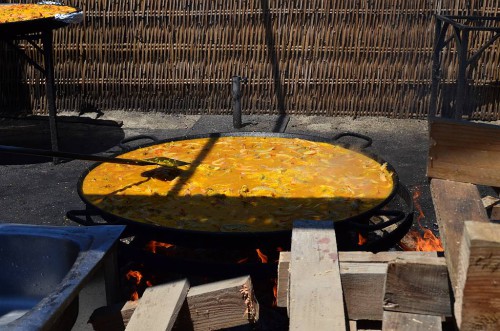Paella is a popular dish not only in Spain, but also throughout the Spanish-speaking world.
The dish originated in the Valencia region of Spain, near Lake Albufera, and consisted of white rice, meat, beans, vegetables and seasoning. Other principal ingredients include saffron, which makes the rice turn yellow, and, of course, olive oil.
In coastal regions, seafood often replaces meat, fish being more plentiful along the coast than they are in Valencia!
There are two main theories as to the origin of the word ‘paella’ itself:
1. ‘Paella’ derives from the Latin word ‘patella’, meaning ‘pan’. The Valencians themselves refer both to the dish and its pan as ‘paella’, although everywhere else the pan itself is referred to as a ‘paellera’.
Workers in the fields would prepare the dish, using whatever meat was available, such as rabbits or snails, and it would be eaten straight from the pan.
2. ‘Paella’ derives from the Arabic word ‘baqiyah’, meaning ‘leftovers’, and referred to a poor man’s dish, rice based, made by labourers to use up remainders from the previous days.
Most people tend to go for theory 1, seeing more of a connection between ‘paella’ and ‘patella’ than between ‘paella’ and ‘baqiyah’. However, it was the Arabs who introduced rice into Spain, so who knows?
The academics can argue over the origins of the word while we just get on and eat it!
The paella pan, or ‘paellera’, is a large, round, shallow steel pan with two handles.
There are a number of paella cooking competitions held throughout the country and in many areas, including Nerja, you will see giant dishes sizzling away on outdoor fires.
This one is (or was!) sizzling away at Restaurante Ayo on Burriana beach, Nerja.
One of the big advantages with cooking paella in large quantities, either at home or in a restaurant, is the fact that it keeps all day, or even until the next day, which is a good thing as it does take a lot of preparation and cooking. It’s quite fascinating to watch them making these huge paellas.

